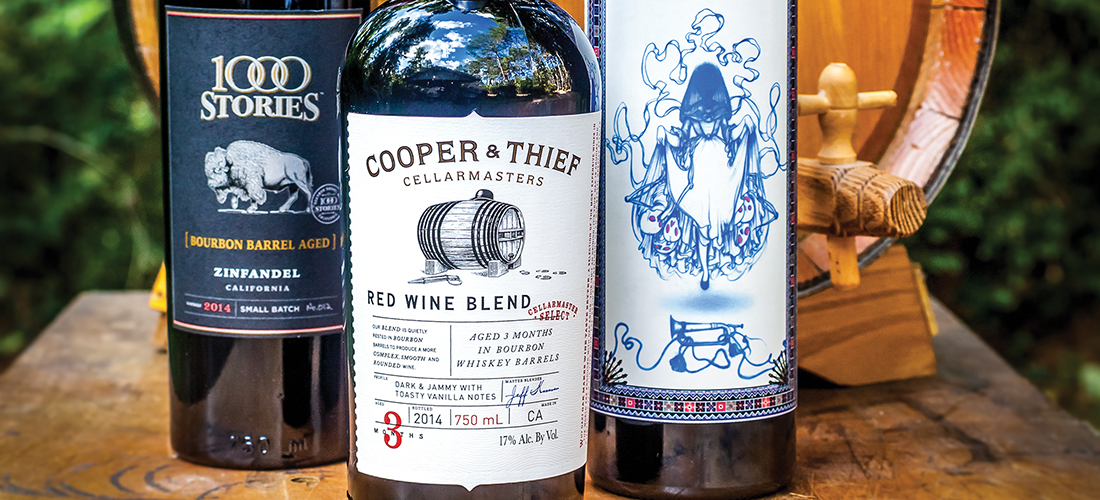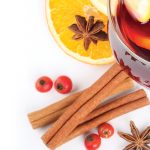
Wine aged in bourbon barrels may be a passing fancy — or a taste here to stay
By Robyn James
My mother was a bourbon drinker, and to my surprise, my father and I were able to convert her to a wine drinker. At least I think we did: Knowing my mom, she may have faked it to make us happy. I say to my surprise, because she never could have swayed me in her direction. I would smell her bourbon drink, turn up my nose and refuse to even taste it. I couldn’t imagine two more polar opposite drinks.
The wine industry, unlike so many industries such as fashion or food, really doesn’t have any “trends.” We are steeped in tradition, the old ways are the best ways, and “fads” are frowned upon.
Recently, it has become impossible to ignore that we have, dare I say, a “fad” to contend with. Maybe it will stay, maybe it will go, but suddenly wine aged in whiskey barrels has become all the rage in my industry.
Weird because the opposite is usually true. Winemakers generally use new French or American oak barrels to age wine, a very expensive investment. Once they have gotten their one to three years’ use out of the barrels they usually sell them to whiskey distilleries to attempt to recoup some of the high investment. American distilleries are very patriotic, using only American oak. They appreciate the open grain of American oak that helps to soften the harshness of the whiskey. Winemakers lean toward the tighter French oak that imparts subtle vanilla flavors. Winemakers buying used barrels from distilleries seems totally backward.
What is the difference between a whiskey barrel and a wine barrel? Apparently a lot. When using a barrel for whiskey, the barrel is actually charred inside so the interior of the barrel acts like a carbon filter, softening and calming down the contents. The whiskey may stay in that barrel for 15 or more years. That never happens with wine. A wine barrel is never “charred,” it is “toasted” to different degrees. The toasting of a French wine barrel doesn’t filter or remove any flavors. It is destined to add flavors of vanilla and light tannins to the wine, enhancing it.
Because of the “aggressiveness” of the old whiskey barrels, the standard routine is to leave the wine in these barrels for only about three months to attempt to add a super subtle nuance of the bourbon.
The idea for this new “fad” came from Dan Phillips, an importer of French and Spanish wines and his good friend Julian Van Winkle, the owner of the cult crazy Pappy Van Winkle Distillery. Pappy Van Winkle whiskey is so sought after and has such small production that most liquor stores hold a lottery to sell the one bottle a year they may be allocated. And, that bottle may sell for anywhere from $750 to $2,000.
They launched the Southern Belle Spanish red wine, a blend of 50 percent syrah and 50 percent monastrell from Spain that is an absolute fruit bomb and delicious. I really didn’t get a big taste of bourbon influence here. It was extremely subtle, but I can see that winemakers are pushing up the alcohol content of the wine to compete with the whiskey flavors, so we have big, bold, fruity reds that knock your socks off. Southern Belle, made by Chris Ringland, one of the best winemakers in the world, is about $20 and worth every penny. It’s produced at Bodegas Juan Gil, one of the best vintners of monastrell in the world.
Mendocino’s 1,000 Stories zinfandel is aged in wine barrels prior to the old bourbon barrels from Heaven Hill and Four Roses that are as much as 13 years old. This wine, again, tops out the alcohol at 15.2 percent. It’s very ripe, with big raspberry and black pepper spice flavors, and sells for about $15. This wine has small amounts of syrah and petite sirah that add to the delicious complexity of the wine.
Cooper & Thief Cellarmaster’s Red Blend has become a big favorite of mine for the bourbon-aged blends. A kitchen sink California wine that is a blend of 38 percent merlot, 37 percent syrah, 11 percent zinfandel, 7 percent petite sirah and 4 percent cabernet sauvignon, it’s aged in bourbon barrels for three months. Almost port-like in style, it’s 17 percent alcohol, a little higher in price at about $23 and has velvety tannins and a long, velvety finish. What the heck, give them a try, see what Kentucky brings to California. PS
Robyn James is a certified sommelier and proprietor of The Wine Cellar and Tasting Room in Southern Pines. Contact her at robynajames@gmail.com.





